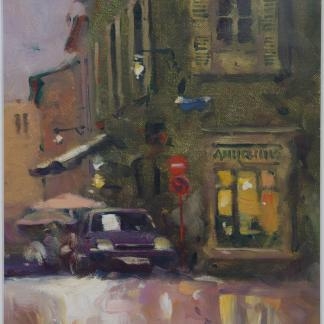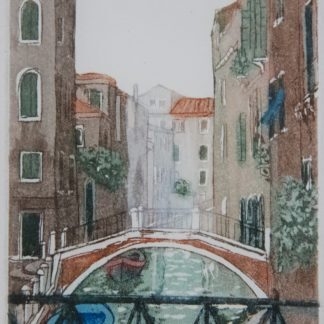Bio
Harald Vike Bio
Harald Hansen Vike (1906-1987) born on 30 August 1906 at Kodal, Norway He left school at 14 to work on the family farm but in 1923, aged 17, he began working as a stoker on board whaling ships. In 1927 he jumped ship and spent six months in Western Australia before returning to Norway
Interested from an early age in drawing and painting, he decided to settle in Western Australia and to become a professional artist He took art lessons at James W. R. Linton’s Institute of Art and from George Pitt Morison, the curator of art at the Western Australian Museum and Art Gallery, who became a good friend and mentor. Drawing and painting both the city and its inhabitants and the surrounding countryside, in 1933 he won the West Australian Society of Arts’ prize for landscape in watercolours. He worked for J. Gibbney & Son Pty Ltd, a graphic arts studio, as an illustrator
Late in 1934 Vike became a founding member of the Workers’ Art Club (from 1936 the Workers’ Art Guild) and in 1935, influenced by the trade unionist Maurice Lachberg and a fellow artist, Leith Angelo, he joined the Communist Party of Australia. Using the pseudonym Rau (Norwegian for red), he drew cartoons for the party’s newspapers, Red Star and Workers’ Star. An active member of the guild, he acted in plays, designed and constructed sets and conducted weekly drawing classes for no pay. In 1934-37 he shared a studio with Herbert McClintock and regularly exhibited his landscapes and Perth city scenes
During World War II he worked at the Commonwealth Steel Co. Ltd’s store. He continued to paint city scenes—roof scapes, laneways and backyards—as well as people either at work or sitting in trams. Julian Goddard described the pictures of workers as celebrating the strength and effort of labourers, ‘in line with the ethos of social realism’, adding that ‘Vike has abandoned the heroic for the ordinary and adopted a style owing more to his knowledge of modernism than the pictorial rhetoric of social realism’
After the war Vike found employment as an illustrator for the Australasian Post and the Argus. On weekends he painted at Kew, Heidelberg or Bacchus Marsh with Len Annois and Alan McCulloch, who described his landscapes as having a ‘van Gogh-like freshness of colour and texture’. Although he held several solo exhibitions, he did not enjoy meeting prospective buyers of his paintings and failed to sell enough to make a living. In 1949-54 he created sets for the pre-film live entertainment at the Palais Picture Theatre, St Kilda, and in 1954-59 for the Princess Theatre. In 1958 he joined the new television station HSV-7 as chief of props, designing and painting sets
In 1964 Vike left for the Kimberley and the Northern Territory with Sybil (Billy) Mearns, whom he married on 26 October 1965 at Tennant Creek. He painted the barren and harsh landscapes, and also people whom he described as ‘characters’. They travelled back to Melbourne via the Queensland coast, where he painted canecutters. He resumed work at HSV-7 but retired in 1969 and moved to Adelaide, from where he took painting trips to the Flinders Ranges and the Adelaide Hills. In 1982 he moved again, to Sandgate, Brisbane. Next year he spent six weeks in Tasmania, camping at the Franklin River blockade in extreme weather conditions, and recording the protesters and events in a series of paintings and drawings. His work was hung in group exhibitions, including Western Australian Artists 1920-50 (Art Gallery of Western Australia, 1980) and Aspects of Perth Modernism 1929-1942 (University of Western Australia, 1986). Early in 1986 he returned to live in North Perth; the last pictures that he painted were of the Swan River













